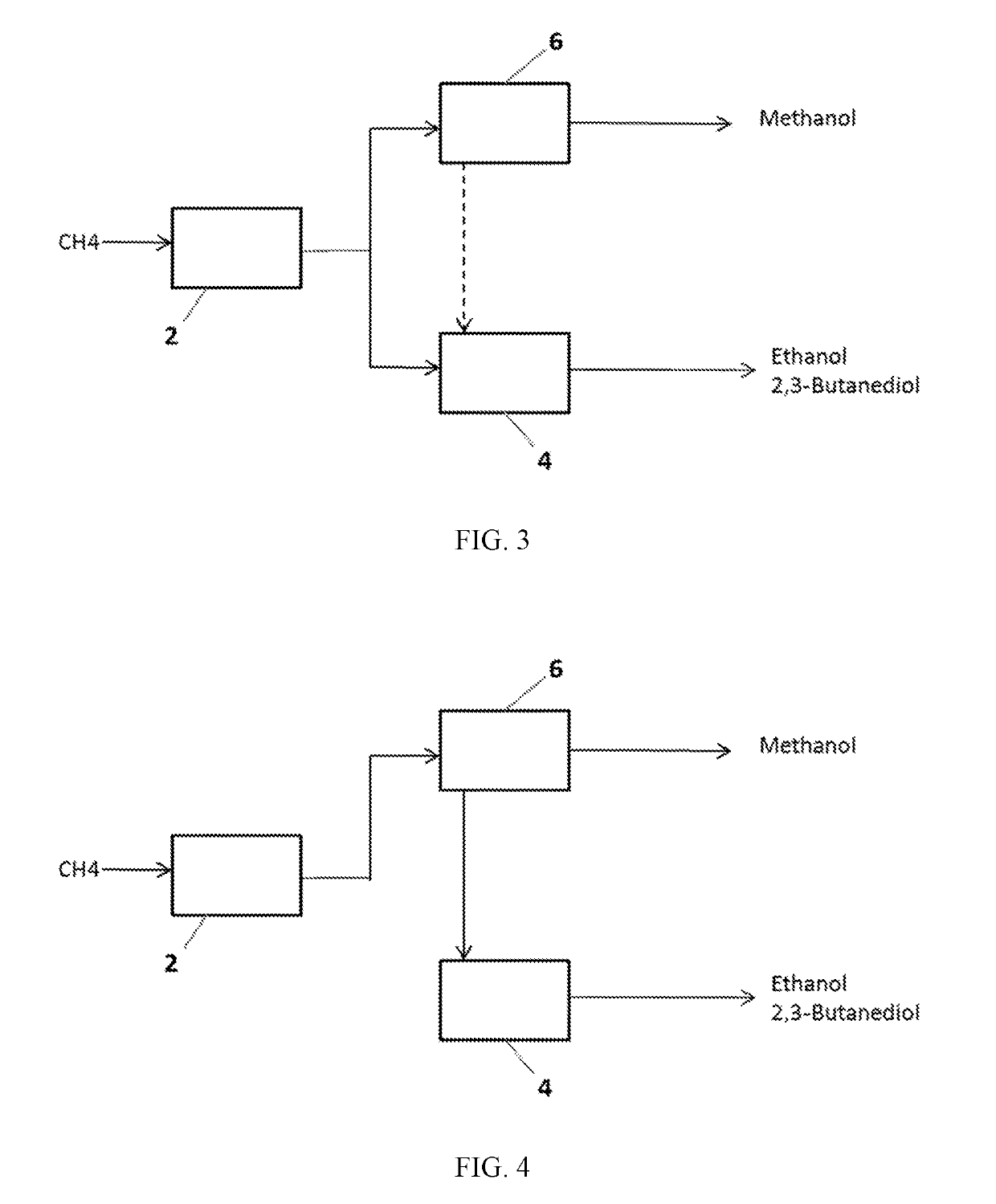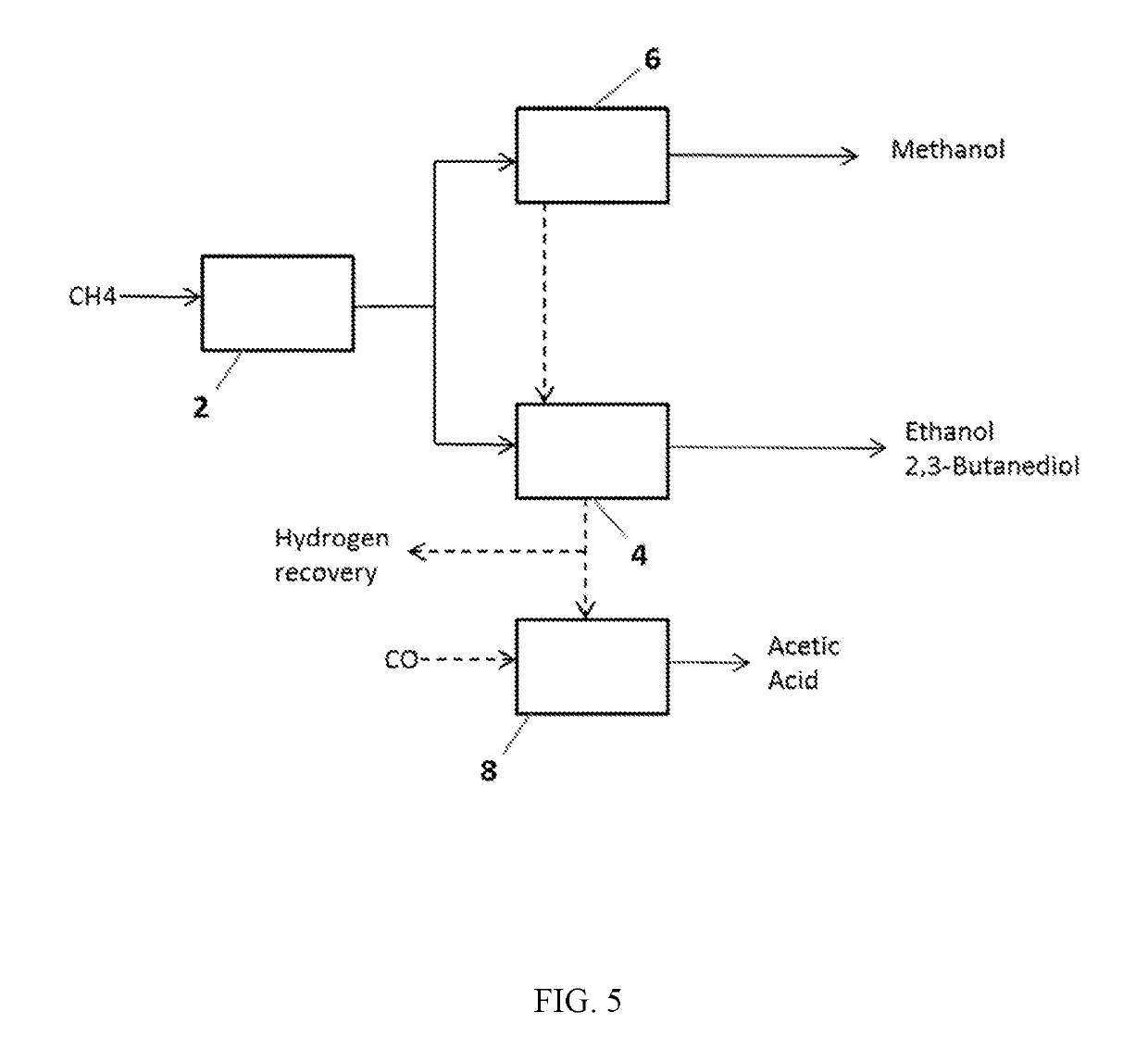Methods and systems for the production of alcohols and/or acids
a technology of alcohol and acid, applied in the field of methods and systems for the production of alcohol and/or acid, can solve the problems of affecting the cost of these carbohydrate feed stocks, affecting the economic viability of starch or sucrose-producing crops for ethanol production in all geographies, and largely unsuccessful attempts to use the hydrogen produced in the above reaction in fuel cell technology, so as to reduce greenhouse gas emissions
- Summary
- Abstract
- Description
- Claims
- Application Information
AI Technical Summary
Benefits of technology
Problems solved by technology
Method used
Image
Examples
Embodiment Construction
Definitions
[0082]Unless otherwise defined, the following terms as used throughout this specification are defined as follows:
[0083]The terms “carbon capture” and “overall carbon capture” refer to the efficiency of conversion of a carbon source, such as a feedstock, into products. For example, the amount of carbon in a woody biomass feedstock converted into useful products, such as alcohol.
[0084]The term “syngas” refers to a gas mixture that contains at least a portion of carbon monoxide and hydrogen produced by gasification and / or reformation of a carbonaceous feedstock.
[0085]The term “substrate comprising carbon monoxide” and like terms should be understood to include any substrate in which carbon monoxide is available to one or more strains of bacteria for growth and / or fermentation, for example.
[0086]“Gaseous substrates comprising carbon monoxide” include any gas which contains carbon monoxide. The gaseous substrate will typically contain a significant proportion of CO, preferably...
PUM
 Login to View More
Login to View More Abstract
Description
Claims
Application Information
 Login to View More
Login to View More - R&D
- Intellectual Property
- Life Sciences
- Materials
- Tech Scout
- Unparalleled Data Quality
- Higher Quality Content
- 60% Fewer Hallucinations
Browse by: Latest US Patents, China's latest patents, Technical Efficacy Thesaurus, Application Domain, Technology Topic, Popular Technical Reports.
© 2025 PatSnap. All rights reserved.Legal|Privacy policy|Modern Slavery Act Transparency Statement|Sitemap|About US| Contact US: help@patsnap.com



